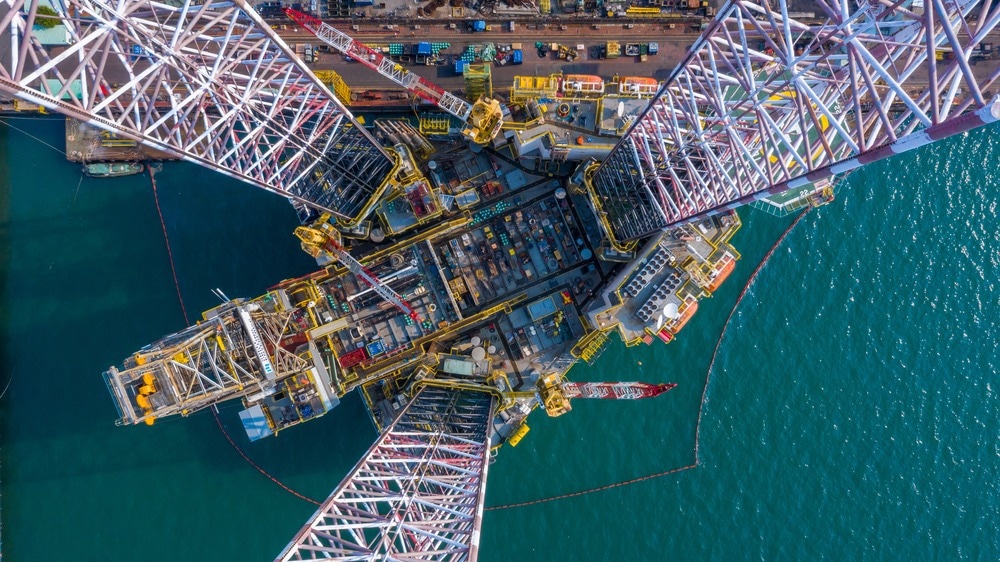Sensors are an integral part of modern industry, providing real-time data and feedback to optimize processes and ensure the safe and efficient operation of complex systems. Sensors may be subjected to various variables that are harmful or can impair their functionality while utilized in harsh environments. This article discusses how new sensor technologies adapt to suit these harsh environments.

Image Credit: Bruno Mameli/Shutterstock.com
What is a Harsh Environment?
Any situation that makes it difficult for sensors and other equipment to operate correctly is referred to as a harsh environment. Harsh environments include industrial facilities, mines, oil and gas rigs, space, polar environments, desert conditions and more.
Harsh environments are significant because they are often encountered in key economic sectors, where equipment failure may have substantial repercussions, including human harm and productivity loss.
Challenges of Harsh Environments
Modern devices used in actuators are subject to strict precision requirements, including those for response time, force and displacement. The eradication of cross-sensitivities faces even more difficulties due to these new requirements. Many cutting-edge precision devices lose their accuracy and dependability when exposed to harsh environments. Advanced sensor and actuator systems must retain maximal autonomy for the components to function independently with minimum maintenance.
Extreme temperatures, high pressure, high humidity, dust or other particles, corrosive chemicals, vibration, and other physical or chemical conditions impact sensors’ ability to perform correctly.
Sensors with Electrical Components
Certain sensors may become unreliable or fail if exposed to temperatures outside their designated working range. For instance, sensors with electrical components could not work correctly in very hot or extremely cold conditions. Therefore, it is crucial for sensors used for electrical purposes to endure thermal shocks and function at temperatures much higher or lower than room temperature.
Sensors Used for Indoor and Outdoor Applications
The sensors used for outdoor applications may get exposed to rain, snow, and strong winds that may damage them, causing a loss in accuracy and precision. In addition, some severe indoor settings are hard to get to, either because they are in distant locations or because they are housed in large industrial buildings that are difficult for people to approach. The installation, maintenance, or repair of such sensors may be challenging.

Image Credit: Avigator Fortuner/Shutterstock.com
How Are Sensor Technologies Adapted to Suit Harsh Environments
A harsh environment poses several difficulties for sensor design, material selection, device performance, and packaging. To solve these problems, integrated sensors and actuators need to be approached from several disciplinary perspectives, including materials science, device design, circuitry and micro and nanofabrication technology.
Relevant Studies
A study published in 2016 discusses harsh environments associated with several industries. In this study, oil and gas, automotive, space, aircraft, farming, and medical implants industries are discussed. They face harsh environmental factors, including high temperature, pressure, radiation vacuum, and biological complexities.
The study also suggests possible solutions to counter these harsh environmental conditions, including alternate materials, coating layers, new designs and protective packaging. The solutions that are presented vary depending on the industrial application. Considering all aspects of the harsh environment to successfully design and fabricate a reliable system is imperative for each application.
Another study published in 2020 focused on the two main obstacles to creating an installed remote sensing monitor that can measure temperature and hydrogen concentrations in a typical nuclear storage situation. These challenges include creating a small, affordable, and reliable sensor system and validating the sensor system for temperature and hydrogen gas leak detection in a harsh nuclear environment.
Sensors Used for Various Industrial Applications
Adapting sensors to the harsh environment can be challenging since it requires using specific tools and materials and meticulous testing and validation. However, by overcoming these obstacles, sensor technologies can provide vital data and assistance in some of the most complex and demanding industrial applications.
Oil and Gas Industry
Sensors in this sector often need to endure high pressures and temperatures and contact with corrosive substances. The oil and gas industry adapt to these harsh environment by designing sensors that can sustain high temperature and pressure regardless of whether they are used in deep-sea exploration or removing oil and gas from arctic permafrost.
Transportation Industry (Including Aviation, Sea, and Rail)
Sensors in transportation systems must be able to operate effectively in various situations, from the heat of a desert to subzero temperatures in polar areas. Additionally, they must be able to bear the physical strains of rapid movement and the vibration of large equipment.
The design of these sensors majorly depends on their deployment site. For example, sensors used in aerospace applications are designed by considering vacuum, radiation, and temperature changes. In contrast, sensors used in maritime settings are designed to endure pressure in marine applications and saltwater corrosion.
Conclusion
Harsh environments pose significant challenges for sensors and equipment regarding functionality and reliability. New sensor technologies are adapting to these challenges by considering various disciplinary perspectives, such as materials science, device design, and micro and nanofabrication technology. Hence, successfully designing and fabricating a reliable sensor system for harsh environments requires considering all aspects of the environment.
References and Further Reading
Ali Imam Sunny, Aobo Zhao, Li Li, and Sambu Kanteh Sakiliba (2020) Low-Cost IoT-Based Sensor System: A Case Study on Harsh Environmental Monitoring. Sensors. https://www.mdpi.com/1424-8220/21/1/214
Bahareh Zaghari, Alex Weddell, and Neil White. (2017). Opportunities and challenges for energy harvesting sensor systems for harsh environments. ACM Digital Library. https://dl.acm.org/doi/abs/10.1145/3142992.3143001
Paddy French, Gijs Krijnen and Fred Roozeboom (2016) Precision in harsh environments. Microsystems & Nanoengineering. https://www.nature.com/articles/micronano201648
Disclaimer: The views expressed here are those of the author expressed in their private capacity and do not necessarily represent the views of AZoM.com Limited T/A AZoNetwork the owner and operator of this website. This disclaimer forms part of the Terms and conditions of use of this website.